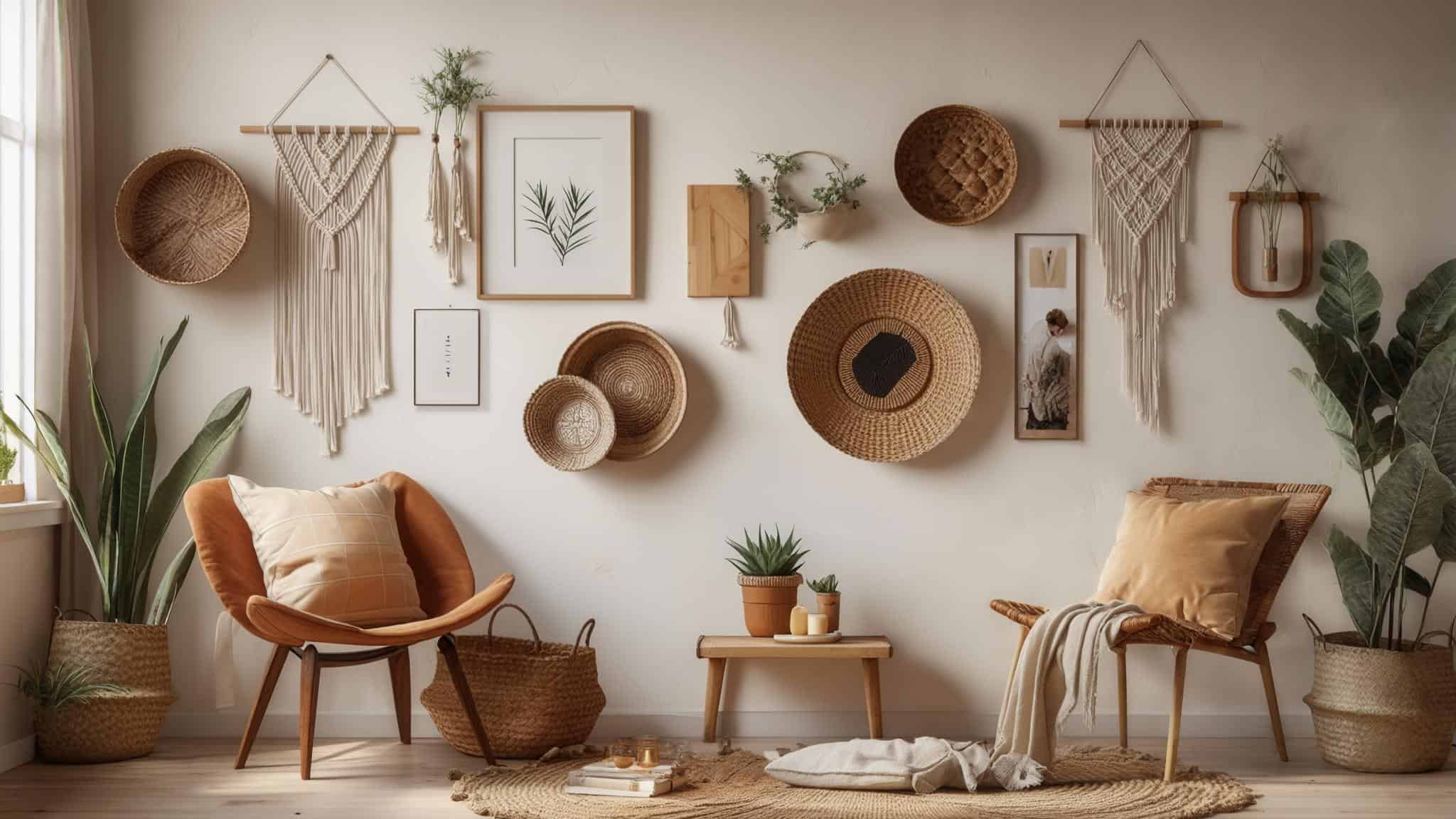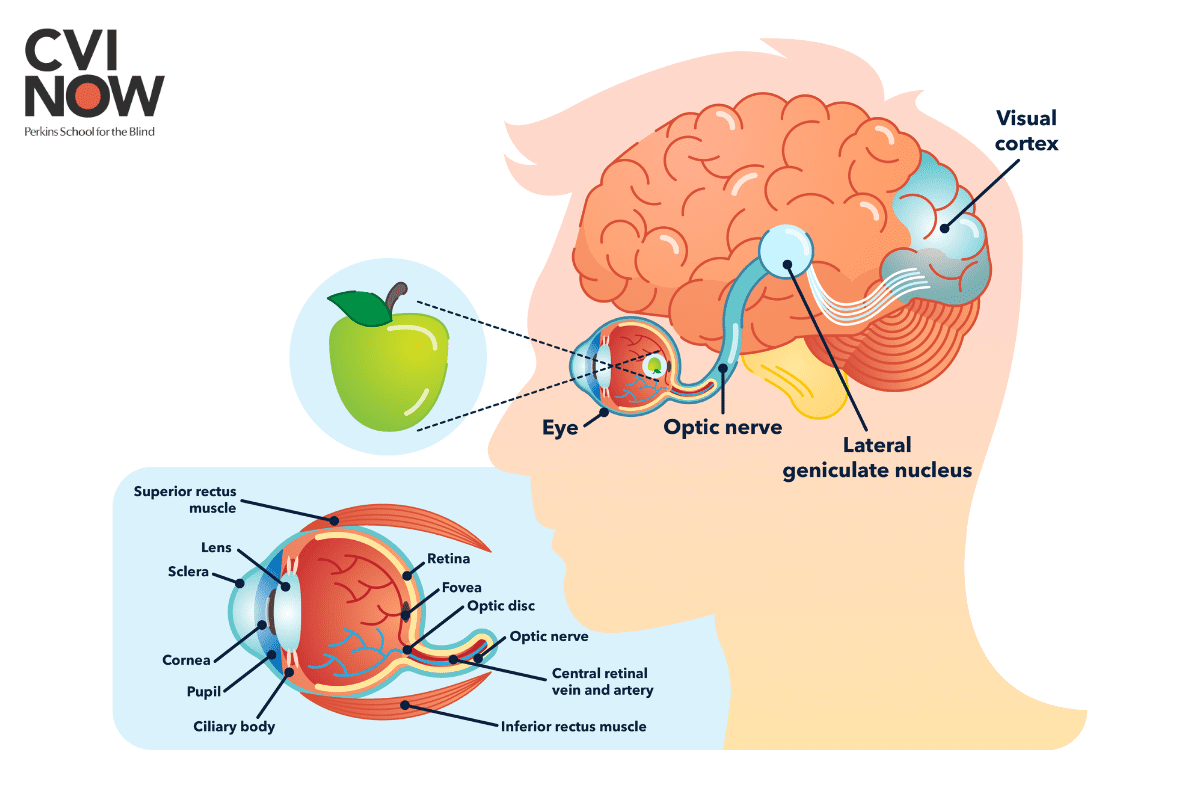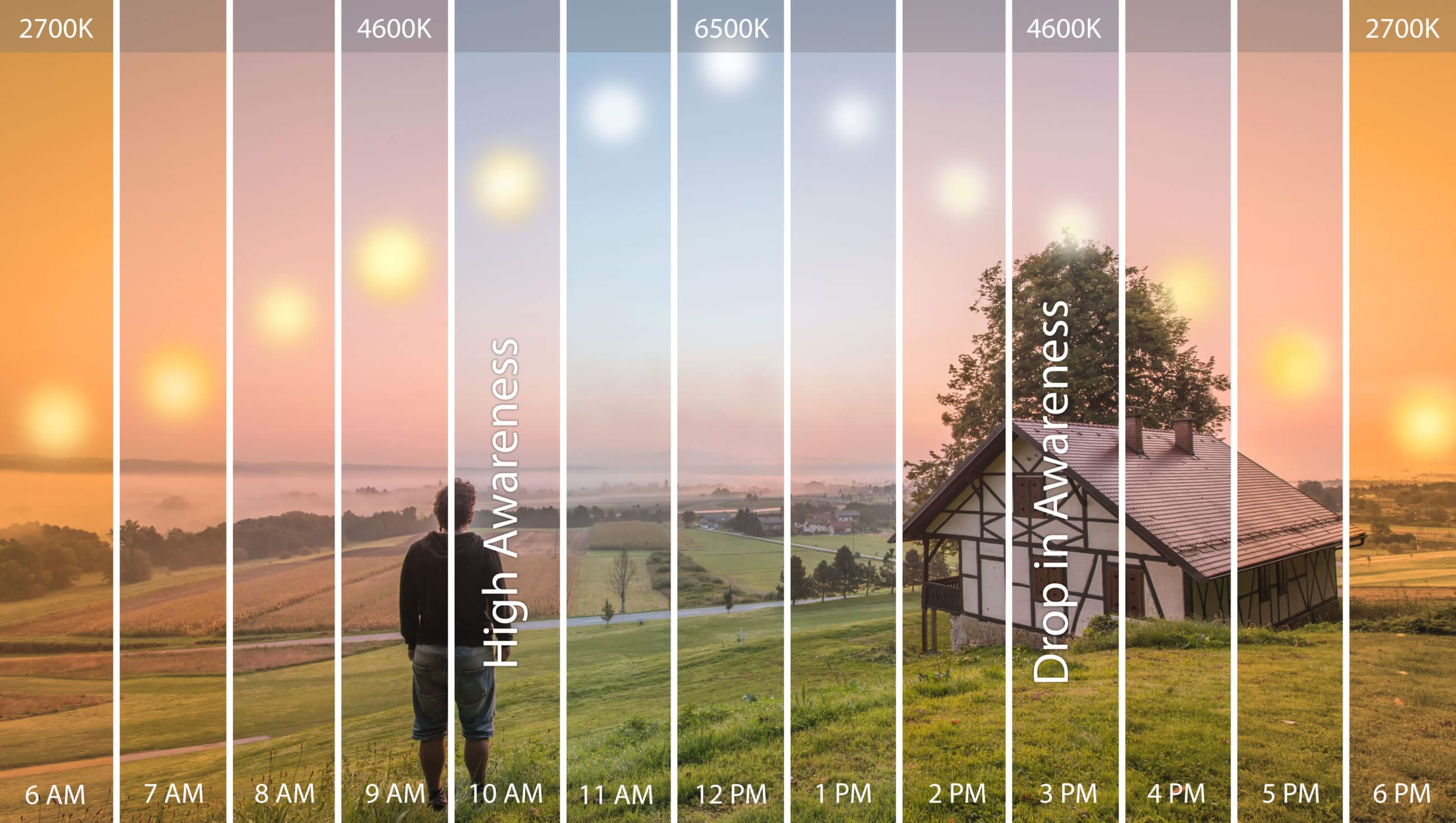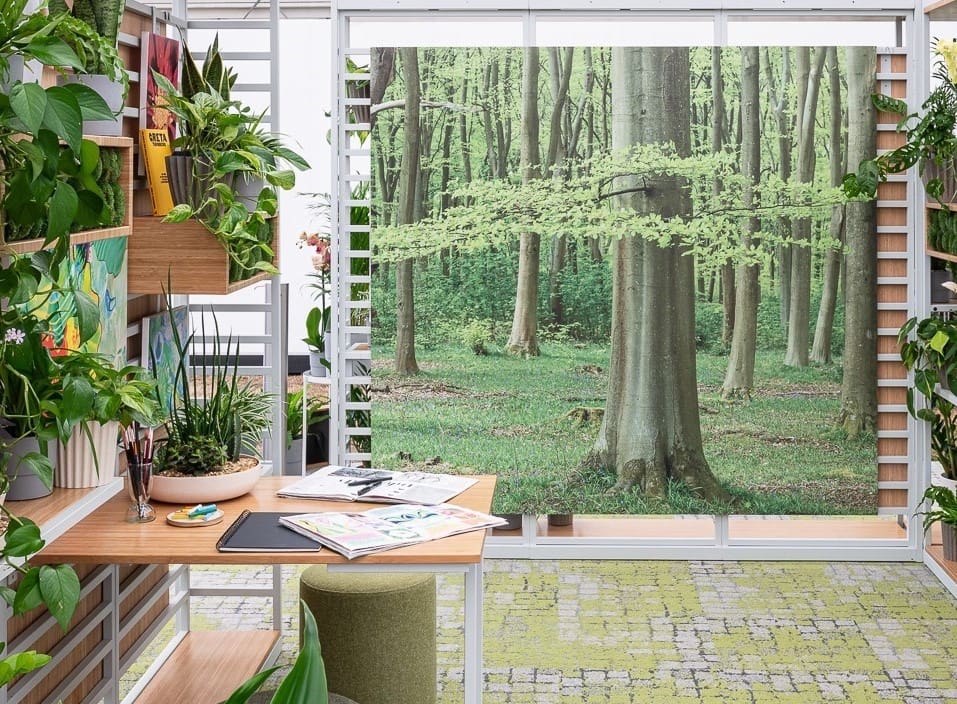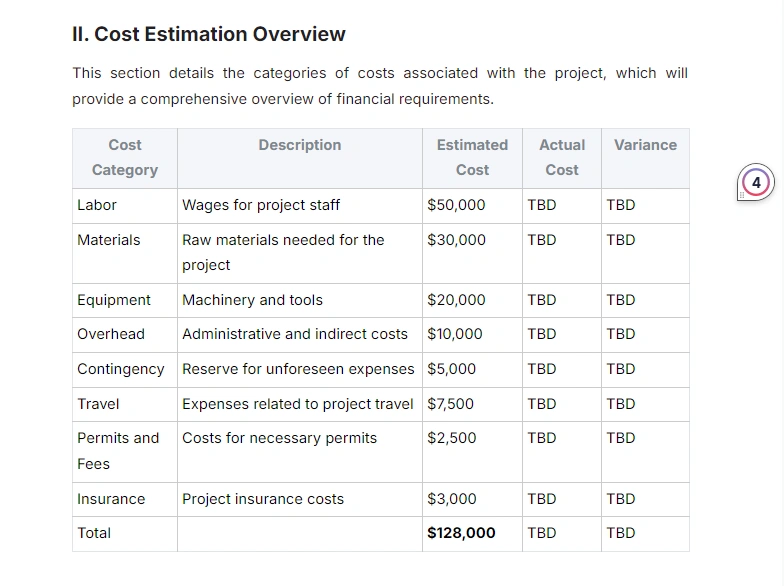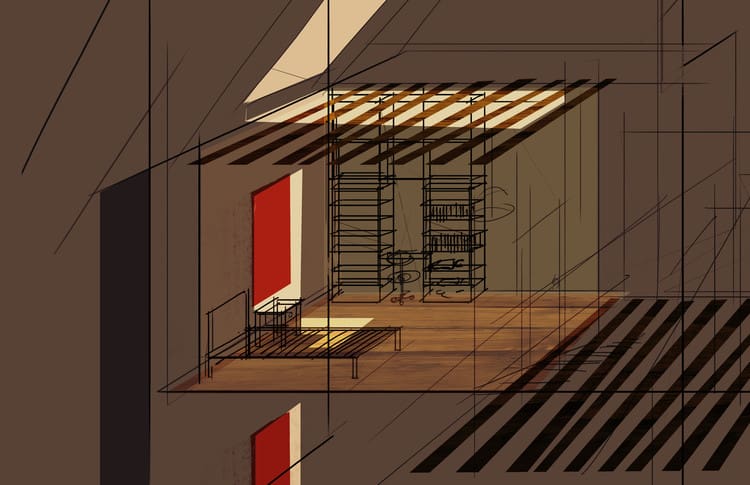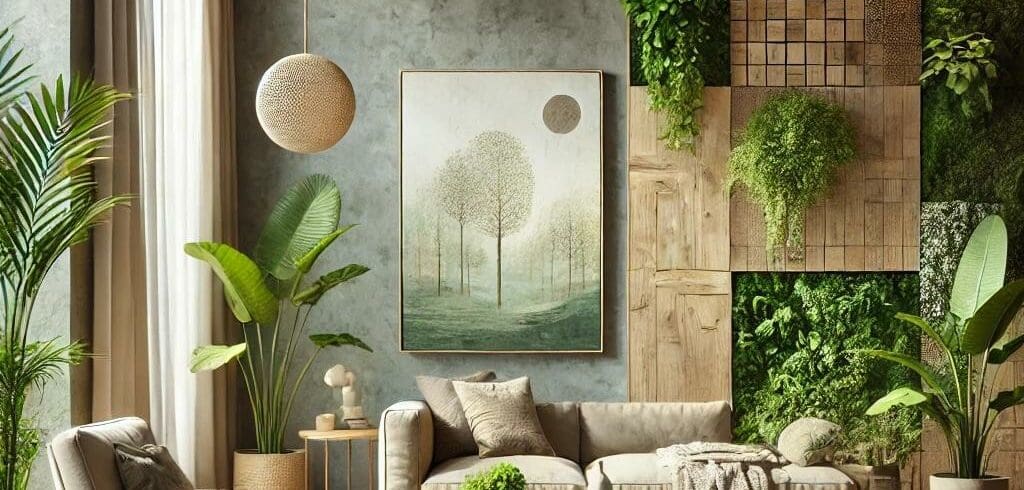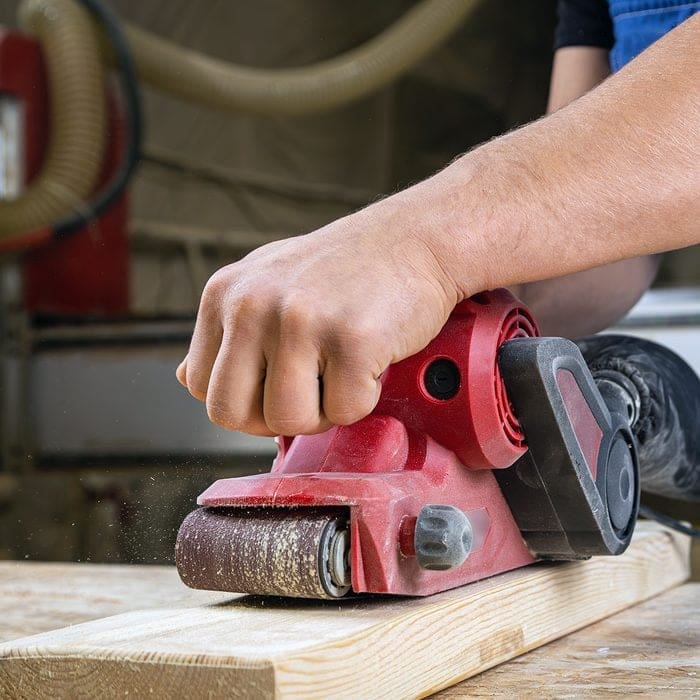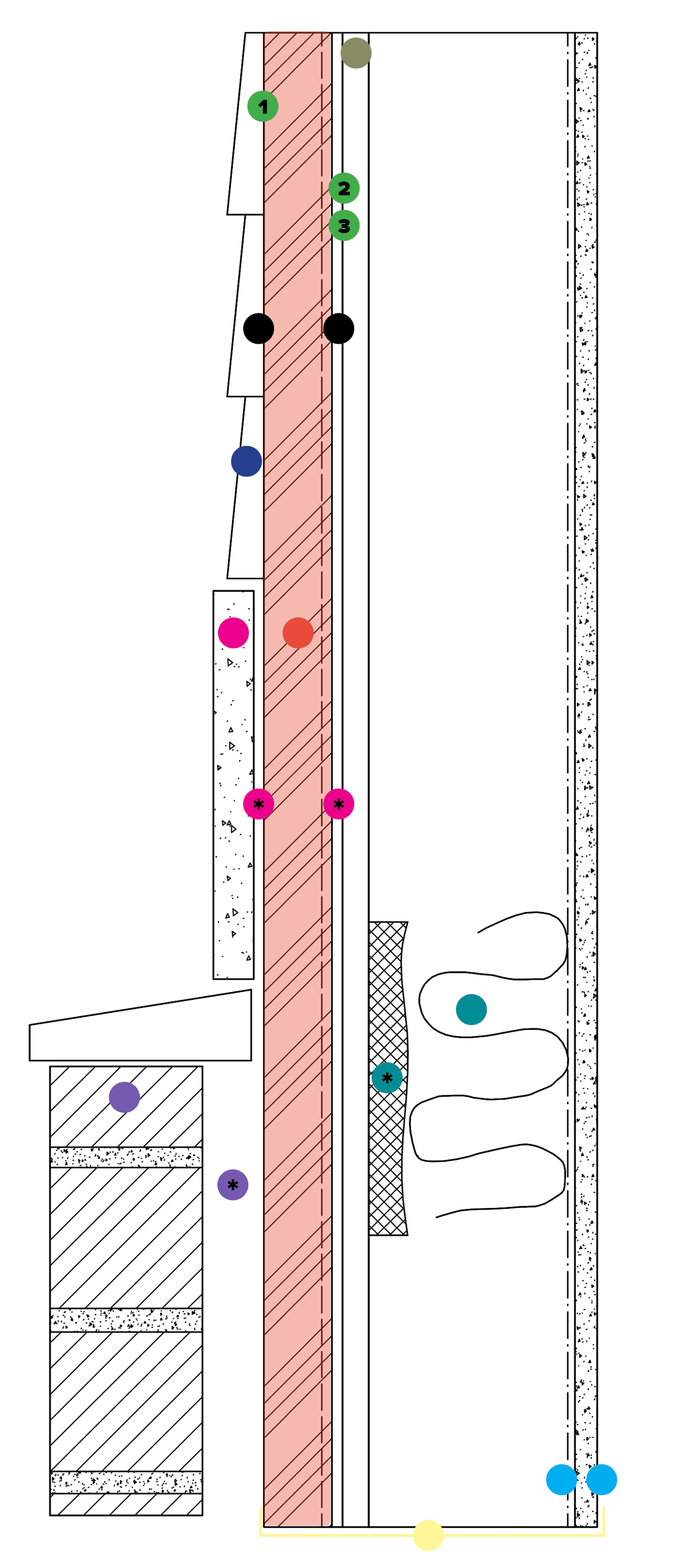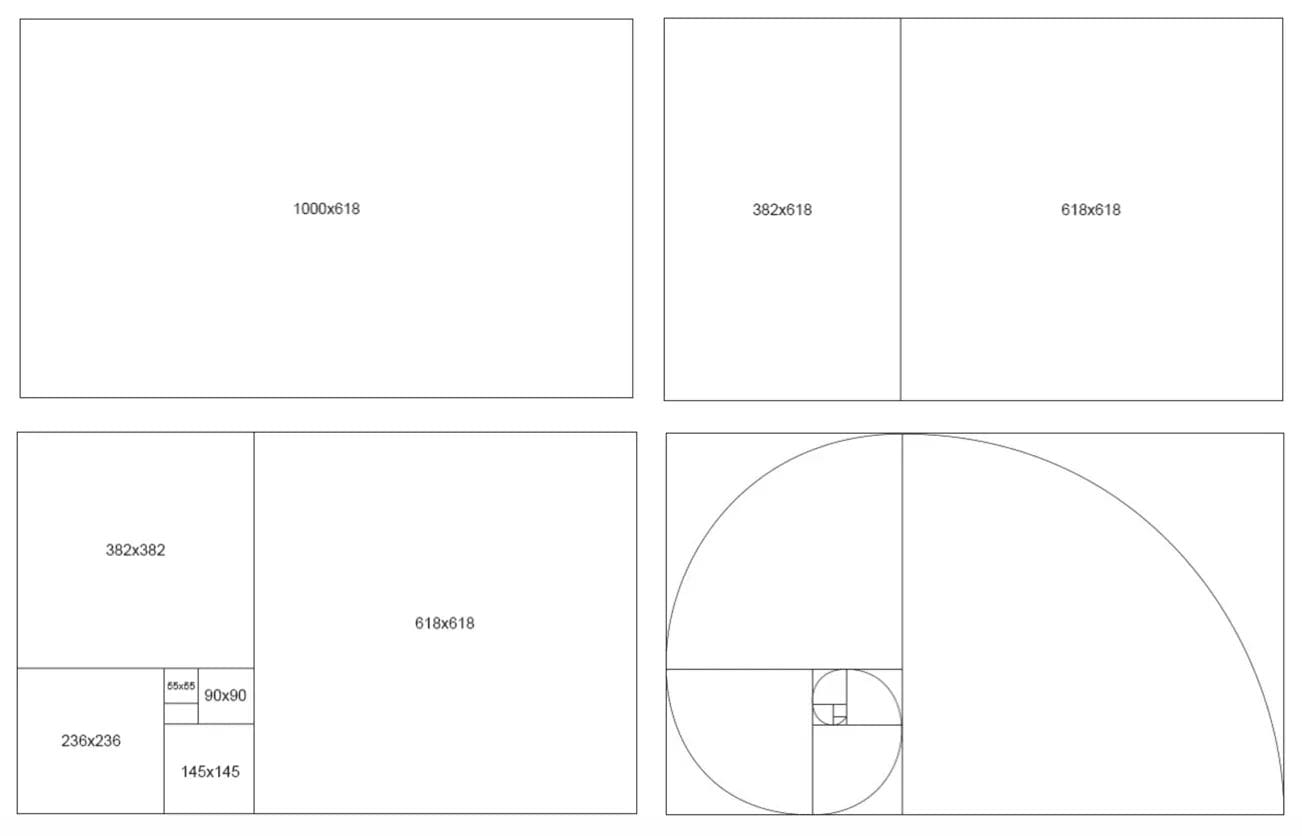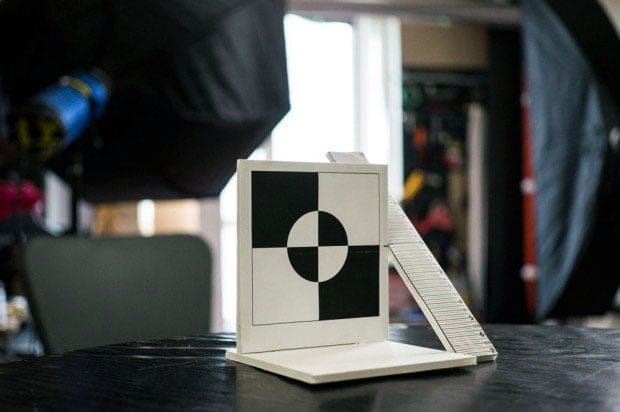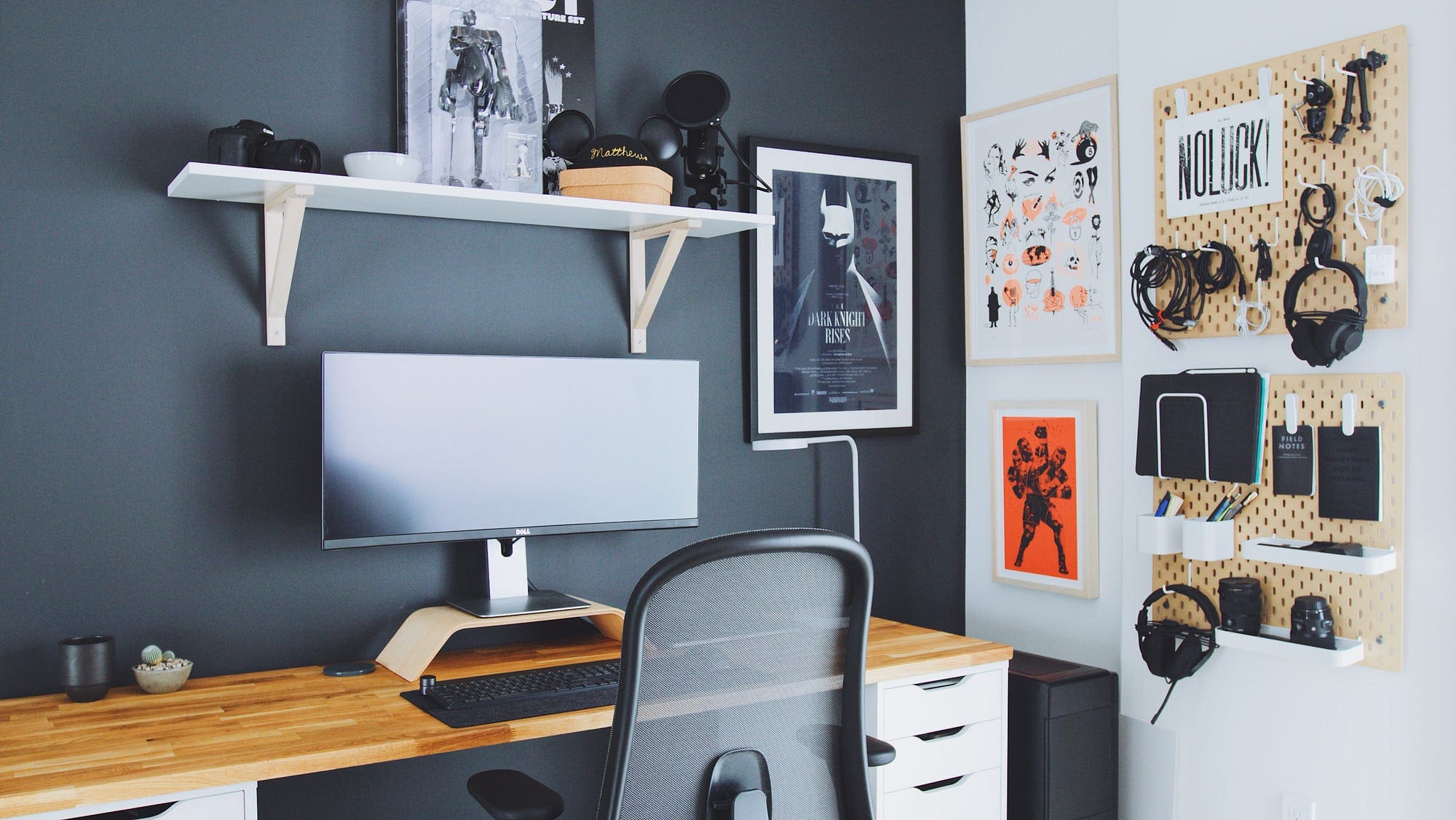DIY Wall Decor Psychology: The Hidden Science Behind Creating Spaces That Actually Transform Your Mind
The global wall art market size was estimated at USD 53,051.8 Million in 2022 and is projected to reach USD 80,958.0 Million by 2030, growing at a CAGR of 5.4% from 2023 to 2030, driven by rising demand for ready-to-install home décor products and increasing penetration for e-commerce sales Grand View Research. This massive market growth reflects something deeper than simple decoration trends – it reveals our fundamental human need to create environments that support psychological well-being and cognitive function.
Table of Contents
- The Neurological Impact of Visual Environment Design
- Cognitive Load Theory in Wall Composition
- Spatial Psychology and Room Dynamics
- The Hidden Economics of DIY Wall Transformation
- Material Lifecycle Cost Analysis
- Resource Optimization Through Strategic Sourcing
- Time Investment ROI Calculations
- Cultural Anthropology of Personal Space Expression
- Tribal Identity Markers in Modern Homes
- Memory Architecture and Emotional Anchoring
- Sustainable Material Innovation and Circular Design
- Biomaterial Experimentation for Wall Applications
- Modular Design for Lifecycle Adaptability
- Advanced Implementation Frameworks and Execution Strategies
- Micro-Climate Adaptation Protocols
- Precision Installation Methodologies
TL;DR
- Your brain processes wall decor differently than you think – understanding cognitive load theory helps you create spaces that enhance rather than overwhelm mental capacity
- DIY wall projects have hidden economic implications including material lifecycle costs, depreciation factors, and skill development that compounds over time
- Wall decor unconsciously communicates cultural identity, social status, and tribal affiliations while serving as memory triggers and emotional anchors
- Sustainable materials like mushroom mycelium and agricultural waste can create unique wall treatments while supporting circular design principles
- Advanced implementation requires understanding micro-climate conditions, mathematical proportions, and load distribution engineering for professional results
- Starting with a clutter-free space is essential for implementing neurologically optimized wall treatments and accurate environmental assessments
The Neurological Impact of Visual Environment Design
Your brain constantly processes visual information from your walls, affecting cognitive function, mood regulation, and spatial perception in ways most people never consider. I’ve discovered that understanding these neurological responses allows you to design DIY wall decor that actively supports mental well-being rather than creating visual chaos that drains cognitive resources.
Visual cortex processing occurs within milliseconds of entering a room, immediately triggering stress or calm responses based on wall composition complexity. When you walk into a space, your brain doesn’t just see the walls – it’s rapidly calculating threat levels, spatial boundaries, and emotional safety markers based on what’s displayed there.
Neurotransmitter production, particularly serotonin and dopamine, fluctuates based on color wavelengths and visual patterns present in your immediate environment. This means your DIY wall decor choices directly influence your brain chemistry throughout the day. Warm colors in the 2700K-3000K range promote melatonin release and activate parasympathetic nervous system responses that support relaxation.
Spatial perception neurons fire differently depending on wall treatments, directly influencing how your brain calculates room dimensions and personal comfort zones. The patterns, textures, and colors you choose send specific signals to your visual processing centers that can make rooms feel larger, smaller, more intimate, or more expansive.
Cognitive Load Theory in Wall Composition
Your brain has limited capacity for processing visual information, and cluttered or poorly organized wall decor can overwhelm this system. Applying cognitive load theory to wall design means organizing elements based on how your eye naturally scans and processes visual data, ensuring your DIY wall decor projects enhance rather than hinder mental performance.
When planning your DIY wall decor transformation, consider how effective decluttering strategies create the mental clarity needed for optimal visual processing and cognitive function. A cluttered foundation makes it impossible to implement neurologically optimized wall treatments.
Working memory can only hold 7±2 visual elements simultaneously, making strategic element placement crucial for preventing cognitive overload. This means if you’re planning a gallery wall, you need to think carefully about how many pieces you’re including and how they relate to each other visually.
Visual scanning patterns follow predictable Z-shaped or F-shaped movements that should guide placement of focal points and supporting elements. Your eye naturally starts in the upper left, moves across, then down and across again. Understanding this pattern helps you position your most important pieces where they’ll have maximum impact.
Consider a living room wall where you want to display family photos, artwork, and decorative shelves. Instead of randomly placing 15 different elements, apply cognitive load theory by creating three distinct zones: a primary focal point (large family portrait), secondary elements (2-3 smaller photos), and supporting details (decorative shelf with 2-3 carefully chosen objects). This approach prevents visual overwhelm while maintaining visual interest.
Visual Information Hierarchy Mapping
Creating effective wall compositions requires understanding how your eye processes information in a specific sequence. This systematic approach organizes wall elements based on natural visual scanning patterns, ensuring each piece supports rather than competes with others for attention.
Primary focal points should occupy the upper-left quadrant where eye movement naturally begins, with secondary elements following the natural scanning path. This isn’t arbitrary – it’s based on decades of research into how humans process visual information.
Information density must decrease as distance from focal points increases to prevent visual competition and maintain clear hierarchy. Think of it as creating breathing room for your eyes and brain to process what they’re seeing without feeling overwhelmed.
| Visual Hierarchy Level | Recommended Elements | Placement Zone | Size Ratio |
|---|---|---|---|
| Primary Focal Point | Single large artwork or mirror | Upper-left quadrant | 100% base size |
| Secondary Elements | 2-3 medium pieces | Following scan path | 60-70% of primary |
| Supporting Details | 3-5 small accessories | Peripheral areas | 30-40% of primary |
| Background Elements | Texture, color, lighting | Throughout space | Subtle presence |
Color Temperature’s Impact on Circadian Rhythms
The specific wavelengths of colors in your DIY wall decor directly influence your body’s internal clock, affecting sleep patterns, alertness, and overall well-being throughout the day. Understanding color temperature allows you to create spaces that support natural biological rhythms rather than disrupting them.
Blue light wavelengths (5000K-6500K) suppress melatonin production and increase cortisol, making them ideal for morning spaces but problematic for bedrooms. If you’re working on a home office or kitchen area where you need to feel alert, cooler colors can actually help boost your energy levels.
Warm color temperatures (2700K-3000K) promote melatonin release and activate parasympathetic nervous system responses that support relaxation and sleep preparation. This is why warm, earthy tones work so well in bedrooms and living areas where you want to unwind.
Recent design trends emphasize the importance of color psychology in home spaces. According to House Beautiful, “The best way to enjoy a beautiful piece of art? Under the perfect lighting, of course. To ensure your chosen painting or photo gets the moment in the spotlight that it deserves, illuminate it.”
Spatial Psychology and Room Dynamics
Wall treatments psychologically alter how you perceive room size, ceiling height, and emotional comfort levels through specific visual tricks that manipulate spatial perception. Understanding these psychological responses allows you to intentionally modify how spaces feel without changing their actual dimensions through strategic DIY wall decor choices.
Horizontal lines and patterns psychologically expand perceived width while vertical elements increase apparent ceiling height through directional visual flow. I’ve seen small apartments feel dramatically larger just by changing the orientation of wall elements from random placement to strategic horizontal emphasis.
Color value and saturation directly affect perceived distance, with lighter colors appearing to recede and darker colors advancing toward the viewer. This means you can make a wall seem farther away or closer just by changing its color treatment.
Pattern scale influences perceived room size, with larger patterns making spaces feel smaller and finer patterns creating expansive sensations. This is why busy, large-scale wallpapers can make rooms feel cramped while subtle textures open them up.
Biophilic Design Integration Techniques
Incorporating nature-inspired wall art ideas into DIY projects triggers positive psychological responses and reduces stress hormones through evolutionary programming that associates natural patterns with safety and well-being. These techniques work at a subconscious level to create calming environments.
Fractal patterns found in nature (tree branches, water ripples, cloud formations) reduce cortisol levels by up to 60% when incorporated into wall designs. Your brain recognizes these patterns as safe and familiar, even if you’re not consciously aware of the connection.
Natural color palettes activate the parasympathetic nervous system, promoting rest and digest responses that counteract chronic stress. Greens, browns, and earth tones literally help your body relax at a physiological level.
Mirror Neuron Activation Through Art Selection
The imagery and textures you choose for wall decor unconsciously influence behavior and emotional states through neurological mirroring responses. Your brain automatically mimics the emotions and actions depicted in visual art, making selection crucial for desired psychological outcomes.
Mirror neurons fire when viewing human figures in art, causing viewers to unconsciously mimic observed postures and emotional expressions. This means a painting of someone looking relaxed and happy can actually make you feel more relaxed and happy.
Texture representation in wall art activates tactile processing centers even without physical contact, influencing mood and stress responses. Your brain processes visual texture almost as if you’re touching it, which is why rough, harsh textures can feel unsettling while smooth, soft textures feel calming.
Proxemic Comfort Zone Manipulation
Wall decor placement and scale psychologically adjust how intimate or expansive a space feels, directly affecting social interactions and personal comfort levels. Understanding proxemics allows you to intentionally modify social dynamics within rooms through strategic visual design.
Large-scale wall elements reduce perceived personal space and increase intimacy, while smaller distributed pieces expand psychological territory. This is why a single large piece of art can make a room feel cozy while many small pieces can make it feel busy and expansive.
Placement height affects dominance perception, with eye-level installations creating equality and higher placements establishing hierarchy. Where you hang things sends subtle social signals about power dynamics and comfort levels.
The Hidden Economics of DIY Wall Transformation
DIY wall decor involves a complex financial ecosystem that extends far beyond initial material costs. Understanding the true economic implications includes hidden expenses, value creation strategies, and long-term investment returns that most people completely overlook when planning projects.
Before investing in expensive DIY wall decor materials, consider how proper furniture removal can free up wall space and reveal hidden opportunities for creative installations. You might discover that clearing out old furniture opens up wall areas you never knew you had.
Total cost of ownership includes material degradation, maintenance requirements, and replacement cycles that can triple initial investment over 10 years. That $200 worth of materials might actually cost you $600 when you factor in touch-ups, repairs, and eventual replacement.
Property value impact varies dramatically based on market demographics, with some DIY choices adding significant equity while others decrease home values. What looks amazing to you might be a turnoff to potential buyers, so understanding your local market matters.
Skill acquisition creates compound returns through application to future projects, potentially saving thousands in professional service costs over time. Every technique you learn on one DIY wall decor project becomes a tool you can use on future projects, multiplying your investment.
Material Lifecycle Cost Analysis
Understanding the true cost of DIY wall decor materials requires analyzing their entire lifespan, including maintenance, replacement, and environmental impact costs. This comprehensive approach reveals which materials provide genuine long-term value versus those that seem affordable initially but become expensive over time.
Material durability varies exponentially based on environmental conditions, with humidity and UV exposure creating 300-500% cost differences over 5-year periods. A material that lasts 10 years in a climate-controlled living room might only last 2 years in a bathroom or sunny kitchen.
Maintenance requirements compound annually, with some materials requiring professional intervention that exceeds original material costs within 3 years. That beautiful natural wood treatment might need refinishing every few years, turning a $100 material cost into a $500+ ongoing expense.
End-of-life disposal costs increasingly impact total ownership expenses as landfill fees rise and environmental regulations tighten. What you pay to get rid of old materials is becoming a significant factor in total project costs.
Material Lifecycle Cost Checklist:
- Calculate initial material costs including tools and supplies
- Research maintenance requirements and frequency
- Estimate replacement timeline based on environmental conditions
- Factor in professional service costs for complex maintenance
- Consider disposal fees and environmental impact costs
- Evaluate resale value impact on property
- Account for skill development and time investment returns
Depreciation vs. Appreciation Factors
Certain DIY wall decor choices actually increase property value while others may detract from it, based on real estate market data and buyer preferences. Understanding these factors helps you make decisions that enhance rather than diminish your home’s financial worth.
Neutral, professionally-executed wall treatments typically add 2-5% to property values, while highly personalized or trend-specific designs often reduce marketability. Your favorite neon pink accent wall might cost you thousands when you sell.
Quality of execution matters more than material cost, with poorly installed expensive materials decreasing value while well-executed budget solutions maintain or increase worth. A perfectly installed $50 treatment beats a sloppy $500 installation every time.
With the Asia Pacific region being the largest revenue generating market in the wall art sector in 2022 Grand View Research, global design trends increasingly influence local property values, making neutral, professionally-executed wall treatments more valuable for resale purposes.
Resource Optimization Through Strategic Sourcing
Advanced techniques for acquiring materials and tools maximize creative potential while minimizing financial investment through strategic sourcing methods. These approaches require planning and networking but can reduce DIY wall decor project costs by 60-80% while accessing higher-quality materials.
Construction waste streams contain premium materials at 10-20% of retail cost, requiring timing coordination with local building projects and renovation schedules. I’ve found incredible hardwood, tile, and metal materials just by building relationships with local contractors.
Seasonal purchasing patterns create predictable price fluctuations, with end-of-season clearances offering 40-70% savings on specific material categories. Buying paint in fall, outdoor materials in winter, and indoor supplies in spring can dramatically reduce costs.
Geographic arbitrage through online marketplaces allows access to regional price differences, particularly for specialty materials not available locally. Sometimes shipping materials from across the country still costs less than buying locally.
Waste Stream Monetization
Identifying and utilizing discarded materials from construction sites, businesses, and other sources creates high-end looking wall decor at minimal cost. This approach requires developing relationships with local contractors and understanding legal requirements for material acquisition.
Commercial renovation projects discard materials worth thousands monthly, with timing and relationship-building providing consistent access to premium supplies. Office buildings, hotels, and retail spaces regularly throw away materials that would cost hundreds at retail.
Legal liability and property rights vary by jurisdiction, requiring written permission and insurance considerations when acquiring discarded materials. Always get permission in writing and understand your local laws about salvaging materials.
Tool Sharing Economy Integration
Leveraging community resources, library tool programs, and sharing networks provides access to professional-grade equipment without purchase investment. These systems require advance planning but enable complex projects that would otherwise be financially prohibitive.
Tool library programs now exist in over 300 US cities, offering professional equipment rental at 5-10% of purchase cost for typical project durations. Why buy a $300 tile saw for a weekend project when you can borrow one for $15?
Neighbor sharing networks reduce individual tool investment by 80-90% while building community relationships that provide ongoing project support. Apps and local Facebook groups make it easier than ever to find people willing to share tools.
Bulk Material Collective Purchasing
Organizing with neighbors or online communities to purchase materials in quantities that unlock wholesale pricing benefits individual projects significantly. This approach requires coordination but can reduce material costs by 30-50% while accessing commercial-grade supplies.
Wholesale minimums typically require 10-20x individual project quantities, making group coordination essential for accessing commercial pricing tiers. Getting five neighbors together to buy paint or tile can unlock massive savings.
Logistics coordination including delivery, storage, and distribution requires advance planning but creates ongoing relationships for future projects. Once you’ve organized one group buy, future coordination becomes much easier.
Time Investment ROI Calculations
Accurately valuing your time investment in DIY projects helps determine when professional installation or pre-made options provide better overall value. These calculations must include learning curves, mistake corrections, and opportunity costs to provide realistic assessments.
Learning curve time typically doubles initial project estimates for first-time techniques, requiring realistic scheduling to prevent rushed execution and costly mistakes. Your first tile installation will take twice as long as you think it will.
Opportunity cost calculations must include foregone income potential and alternative uses of time to determine true project value. If you make $50/hour at work, spending 20 hours on a project that saves $200 might not make financial sense.
Skill transferability multiplies time investment returns, with techniques learned on wall projects applying to flooring, furniture, and other home improvement areas. Learning to use a level properly benefits every future project you tackle.
| Project Complexity | Learning Curve Multiplier | Skill Transfer Value | ROI Timeline |
|---|---|---|---|
| Basic (painting, simple mounting) | 1.5x estimated time | High – applies to multiple projects | 6-12 months |
| Intermediate (tiling, built-ins) | 2.0x estimated time | Medium – room-specific skills | 1-2 years |
| Advanced (electrical, plumbing integration) | 3.0x estimated time | Low – specialized knowledge | 2-5 years |
| Expert (structural modifications) | 4.0x estimated time | Very Low – rarely transferable | 5+ years |
Skill Development Compound Interest
Skills gained from DIY wall decor projects create exponential value over time through application to other home improvement areas. This compound effect transforms initial time investments into long-term capabilities that provide ongoing financial returns.
Basic wall preparation skills transfer directly to painting, tiling, and electrical work, creating 5-10x return on initial learning investment over 5 years. Learning to properly prep a wall teaches you techniques you’ll use in every room of your house.
Tool familiarity and safety knowledge accelerate future project completion times by 40-60% while reducing material waste and mistake-related costs. Once you know how to use a drill properly, every project involving fasteners becomes faster and more accurate.
Cultural Anthropology of Personal Space Expression
DIY wall decor serves as a form of cultural communication, identity expression, and social signaling that transcends mere decoration. Understanding these anthropological functions helps you make intentional choices about the messages your walls communicate to both visitors and inhabitants.
Visual culture operates through shared symbolic systems that communicate group membership, values, and social positioning without conscious awareness. Your wall choices send signals about who you are and what you value, whether you realize it or not.
Personal space decoration follows predictable patterns based on cultural background, generational identity, and socioeconomic status that trained observers can decode. An anthropologist could probably tell you quite a bit about your background just by looking at your walls.
Identity expression through wall decor serves psychological functions including self-affirmation, aspiration reinforcement, and social boundary establishment. The images and objects you choose to display help reinforce your sense of self and communicate your boundaries to others.
Tribal Identity Markers in Modern Homes
Wall decor choices unconsciously communicate group affiliations, values, and social positioning to visitors and inhabitants through visual symbols that function as modern tribal markers. Understanding these signals allows you to intentionally craft the cultural messages your space communicates.
Color palettes, artistic styles, and material choices communicate political affiliations, educational background, and cultural values through established visual vocabularies. Certain color combinations immediately signal political leanings, while material choices communicate environmental values or economic priorities.
Generational identity markers include specific aesthetic preferences, technology integration levels, and sustainability consciousness that immediately signal age cohort membership. Millennials tend to prefer authentic, sustainable materials while Baby Boomers often gravitate toward traditional craftsmanship displays.
Professional identity often manifests through industry-specific imagery, achievement displays, and workspace integration that reinforces career-related self-concept. Lawyers display different visual cues than artists, and these differences are immediately recognizable to visitors.
Generational Visual Language Translation
Different age groups interpret and respond to various wall decor elements through distinct visual languages developed during their formative years. Understanding these generational differences enables creating spaces with intergenerational appeal or targeted demographic resonance.
Baby Boomers respond positively to traditional materials, craftsmanship displays, and nature imagery that reflects their formative cultural experiences. They value quality construction and natural materials that demonstrate permanence and stability.
Millennials prefer authentic, sustainable, and technology-integrated solutions that align with their values around environmental consciousness and digital connectivity. They want materials that tell a story about sustainability and social responsibility.
A multi-generational family room might feature a gallery wall combining vintage family photographs in traditional frames (appealing to older generations) with modern geometric prints and sustainable bamboo frames (resonating with younger family members), creating visual harmony while honoring different aesthetic preferences.
Socioeconomic Status Signaling Through DIY Choices
DIY wall decor communicates economic position and cultural capital through subtle signals including material quality, execution sophistication, and aesthetic choices. Understanding these dynamics helps you navigate social perceptions intentionally rather than accidentally.
Material authenticity versus imitation sends clear signals about disposable income and cultural knowledge, with trained observers easily distinguishing genuine from synthetic options. Real hardwood communicates differently than laminate, even when the visual difference is subtle.
Execution quality communicates time availability, skill level, and attention to detail that correlates with educational background and professional status. Perfectly aligned installations suggest either professional training or the luxury of time to perfect techniques.
Memory Architecture and Emotional Anchoring
Strategically placed creative DIY wall decor ideas serve as memory triggers and emotional regulators, creating psychological comfort zones within the home. This approach uses visual cues to support mental well-being and reinforce positive behavioral patterns through environmental psychology.
When implementing memory-focused wall displays, ensure proper preparation with effective clutter removal techniques that create the mental clarity needed for meaningful emotional connections. Clutter interferes with the psychological impact of meaningful objects.
Memory consolidation strengthens when associated with specific visual cues, making wall placement of meaningful objects crucial for long-term recall and emotional processing. The location where you place meaningful items affects how strongly they connect to your memories.
Emotional regulation improves in environments containing personal significance markers that trigger positive associations and reduce stress responses. Seeing objects that remind you of happy times or important people literally helps regulate your emotional state.
Behavioral reinforcement occurs through visual reminders of goals, values, and aspirational identities that maintain motivation and self-concept alignment. Vision boards work because they provide daily visual reinforcement of your goals and values.
Nostalgia Engineering Techniques
Incorporating elements that trigger positive memories and emotional states uses color, texture, and imagery to create psychological time travel experiences. These techniques provide emotional comfort and stress relief through controlled nostalgia activation.
Scent-memory associations can be triggered through visual representations of meaningful places, people, or experiences that activate multi-sensory recall. A photo of your grandmother’s kitchen can actually trigger memories of how it smelled and felt to be there.
Color psychology leverages personal history with specific hues to recreate emotional states associated with positive memories and experiences. The blue of your childhood bedroom or the green of your favorite park can instantly transport you back to those positive feelings.
Future Self Visualization Spaces
Creating wall areas that represent aspirational identities and goals uses visual cues to reinforce positive behavioral changes and personal growth. These spaces serve as daily reminders and motivation sources for desired life changes.
Goal visualization effectiveness increases 42% when supported by environmental cues that maintain focus and motivation during challenging periods. Having visual reminders of your goals makes you more likely to achieve them.
Identity reinforcement through visual representation helps maintain behavioral changes by strengthening self-concept alignment with desired outcomes. Seeing yourself as the person you want to become makes it easier to act in ways that support that identity.
Cultural Heritage Integration Methods
Techniques for honoring and displaying cultural background through DIY projects require balancing authenticity with personal expression while avoiding appropriation. These methods celebrate heritage while creating meaningful personal connections to cultural identity.
Authentic cultural representation requires understanding historical context, symbolic meanings, and appropriate usage of traditional elements in contemporary settings. Research the meaning behind cultural symbols before incorporating them into your designs.
Personal connection authenticity matters more than perfect historical accuracy, with family stories and individual experiences providing legitimate basis for cultural expression. Your family’s version of cultural traditions is valid even if it differs from textbook examples.
Sustainable Material Innovation and Circular Design
Pioneering approaches to DIY wall decor prioritize environmental responsibility through material innovation and circular economy principles. These methods explore cutting-edge sustainable materials while designing systems that minimize waste and maximize resource efficiency throughout the entire project lifecycle.
Biomaterial development now includes mushroom mycelium, agricultural waste composites, and bio-based polymers that offer unique aesthetic properties while biodegrading safely. These materials are becoming more accessible to DIY enthusiasts as production scales up.
Circular design principles require planning for disassembly, material recovery, and component reuse from the initial design phase rather than as an afterthought. Think about how your project will end its life before you begin construction.
Carbon footprint reduction through local sourcing, renewable materials, and energy-efficient production methods can decrease environmental impact by 70-80% compared to conventional approaches. Every material choice is an environmental choice.
Biomaterial Experimentation for Wall Applications
Exploring cutting-edge sustainable materials opens new possibilities for unique wall treatments that align with environmental values. These materials offer distinct aesthetic qualities while supporting regenerative practices that benefit rather than harm ecological systems.
Growing cycles for biomaterials range from days to months, requiring advance planning but offering complete control over final properties including density, texture, and color. You can literally grow your wall materials to exact specifications.
Processing techniques for natural materials often require specialized knowledge but can be learned through online communities and experimental workshops. The learning curve is steep but the results are completely unique.
Performance characteristics of biomaterials continue improving through research, with some now matching or exceeding traditional materials in durability and appearance. We’re reaching a point where sustainable doesn’t mean compromising on quality.
The growing interest in sustainable DIY solutions is reflected in current design trends. House Digest notes that “You can mimic the Dutch pour with a hair dryer, nail the draped art look using old sheets, or fashion an abstract artwork with a few toilet paper strips,” demonstrating how everyday materials can be repurposed for creative wall treatments.
Mycelium Growing Techniques for Textural Elements
Step-by-step processes for cultivating mushroom root structures create organic, biodegradable wall sculptures and textural panels. This technique requires patience and specific environmental conditions but produces completely unique results impossible to achieve with manufactured materials.
Growth substrate preparation involves sterilization, nutrient balance, and pH control that determines final texture, density, and structural properties. The substrate you choose affects everything about the final product.
Environmental control including temperature, humidity, and air circulation affects growth patterns and can be manipulated to create specific aesthetic effects. You can actually direct how the mycelium grows by controlling its environment.
Mycelium Growing Process Checklist:
- Sterilize growing substrate (sawdust, agricultural waste)
- Inoculate with mushroom spores in sterile conditions
- Maintain temperature between 75-80°F
- Control humidity at 80-90% during growth phase
- Monitor pH levels (6.0-7.0 optimal)
- Provide adequate air circulation
- Harvest at desired density (7-14 days)
- Dry thoroughly to halt growth process
Agricultural Waste Upcycling Methodologies
Transforming rice husks, wheat straw, and other agricultural byproducts into attractive wall covering materials requires understanding processing techniques that convert waste streams into valuable design resources. These methods support rural economies while creating distinctive aesthetic elements.
Binding agents for agricultural waste range from natural resins to bio-based polymers, each affecting final appearance, durability, and environmental impact. The binder you choose determines both the look and performance of the final material.
Processing equipment can be improvised or purchased depending on scale, with small-batch techniques suitable for individual projects and larger equipment enabling community-scale production. Start small and scale up as you gain experience.
Modular Design for Lifecycle Adaptability
Creating wall decor systems that evolve, reconfigure, and adapt to changing needs prevents waste while maintaining aesthetic appeal over time. This approach treats wall treatments as dynamic systems rather than permanent installations.
Component standardization enables mixing, matching, and repurposing elements across different rooms and time periods while maintaining visual coherence. Design your system once, then adapt it forever.
Connection systems must balance ease of reconfiguration with structural stability, requiring careful engineering of joints, fasteners, and support mechanisms. The connections are often more important than the components themselves.
Scalability planning allows systems to grow or contract based on space changes, family evolution, or aesthetic preferences without requiring complete replacement. Design for change from the beginning.
Component Standardization Systems
Developing personal design standards allows wall decor elements to be mixed, matched, and repurposed across different rooms and time periods. This systematic approach maximizes investment value while maintaining design flexibility.
Dimensional standards including thickness, mounting systems, and proportional relationships enable interchangeability while preserving aesthetic harmony. Create your own design language that works across your entire home.
Material compatibility ensures different components age similarly and maintain visual cohesion over time despite varying usage patterns. Choose materials that will age gracefully together.
Disassembly Planning Integration
Designing DIY wall projects with end-of-life considerations ensures materials can be easily separated for recycling or repurposing. This forward-thinking approach prevents future waste while simplifying maintenance and updates.
Fastener selection prioritizes reversibility over permanent attachment, using mechanical connections rather than adhesives where structural requirements permit. Screws beat glue when you’re planning for disassembly.
Material separation planning considers recycling requirements and contamination prevention to maintain material value through multiple use cycles. Keep different materials separate so they can be properly recycled later.
Advanced Implementation Frameworks and Execution Strategies
Tactical methodologies and systematic approaches bridge the gap between conceptual understanding and successful DIY wall decor execution. These precision techniques address environmental variables and installation challenges that determine long-term project success.
Professional-quality DIY wall decor installations often require comprehensive space preparation to ensure accurate measurements and optimal working conditions. You can’t do precision work in a cluttered, disorganized space.
Environmental adaptation protocols account for humidity fluctuations, temperature variations, and light exposure patterns that affect material performance over time. Your local climate affects every material choice you make.
Mathematical precision in placement and proportioning creates professional-quality results that enhance rather than detract from overall space aesthetics. The difference between amateur and professional results often comes down to precise measurements and calculations.
Load distribution engineering prevents structural damage while ensuring safety margins that exceed building code requirements for permanent installations. Understanding structural loads keeps your installations safe and your walls intact.
Micro-Climate Adaptation Protocols
Developing wall decor solutions that respond to specific environmental conditions within individual rooms prevents material failure and maintains aesthetic appeal. Understanding these micro-climates enables material selection and treatment decisions that ensure long-term success.
Room-specific conditions vary dramatically even within single homes, with bathrooms, kitchens, and basements requiring different material approaches than living areas. Each room in your house has its own unique environmental challenges.
Seasonal variation patterns affect material expansion, contraction, and moisture absorption in predictable cycles that can be planned for during design phases. Understanding your local seasonal patterns helps you choose materials that will perform well year-round.
Monitoring equipment provides baseline data for material selection and helps identify problem areas before installation begins. A simple hygrometer can save you from costly material failures.
A bathroom gallery wall requires different considerations than a living room installation. Use moisture-resistant materials like sealed wood or acrylic frames, ensure adequate ventilation around installations, and choose artwork printed on waterproof substrates or protected with UV-resistant glass to prevent warping and fading from steam and humidity.
Humidity-Responsive Material Selection
Choosing and treating materials that expand, contract, or change properties based on moisture levels prevents warping, mold, or degradation over seasonal cycles. This proactive approach maintains both structural integrity and visual appeal.
Hygroscopic materials absorb and release moisture at different rates, requiring compatibility matching to prevent differential movement that causes joint failure. Materials that move at different rates will eventually separate or crack.
Vapor barrier integration controls moisture migration while allowing necessary air circulation to prevent condensation and mold growth. You need to control moisture without creating trapped air pockets.
Thermal Expansion Compensation Techniques
Engineering mounting systems and material interfaces that accommodate natural expansion and contraction maintains structural integrity and visual alignment despite temperature fluctuations. These techniques prevent cracking, warping, and joint failure.
Expansion joint placement must account for material properties, temperature ranges, and structural constraints while maintaining aesthetic continuity. Plan for movement before it happens.
Fastener selection includes thermal movement allowances that prevent stress concentration while maintaining adequate holding power. The wrong fastener can cause expensive failures as materials expand and contract.
Precision Installation Methodologies
Professional-grade techniques achieve gallery-quality results in DIY installations through systematic approaches that eliminate common errors. These methods require patience and attention to detail but produce results indistinguishable from professional work.
Measurement accuracy compounds throughout installation, with small initial errors creating major alignment problems that require complete reinstallation. Measure twice, cut once, install perfectly.
Tool selection affects both precision and efficiency, with laser levels, digital measuring devices, and specialized fasteners enabling accuracy impossible with basic tools. Investing in quality tools pays dividends in results.
Quality control checkpoints throughout installation catch errors before they become permanent, saving time and materials while ensuring professional results. Stop and check your work at every step.
Precision Installation Checklist:
- Measure wall dimensions and mark stud locations
- Create paper templates for complex layouts
- Use laser level for horizontal and vertical alignment
- Mark pilot holes with precision before drilling
- Check alignment at each step before proceeding
- Use appropriate fasteners for wall type and weight
- Test stability before final positioning
- Document installation for future reference
Mathematical Proportion Calculation Systems
Using golden ratio principles, Fibonacci sequences, and architectural proportion theories determines optimal sizing and placement for maximum visual harmony. These mathematical relationships create subconsciously pleasing arrangements that feel naturally balanced.
Golden ratio applications (1.618:1) create proportional relationships that appear naturally harmonious across cultures and individual preferences. This ratio appears throughout nature and art for good reason.
Fibonacci sequence spacing (1, 1, 2, 3, 5, 8, 13…) provides mathematically derived intervals that create visual rhythm and movement. These numbers create spacing that feels naturally right to the human eye.
Load Distribution Engineering
Calculating weight distribution across wall surfaces and designing mounting solutions prevents long-term structural damage or safety hazards. This engineering approach ensures installations remain secure while protecting building integrity.
Wall construction types (drywall, plaster, masonry, wood frame) have different load-bearing capacities that determine mounting system requirements. Know your wall type before you start drilling.
Dynamic loading from vibration, thermal movement, and settling requires safety factors beyond static weight calculations. Account for movement and vibration in your load calculations.
Micro-Adjustment Calibration Protocols
Techniques for fine-tuning installations after initial placement include shimming methods, tension adjustment systems, and alignment correction procedures. These protocols account for material settling and environmental adaptation that occurs post-installation.
Material settling occurs predictably within 48-72 hours of installation, requiring planned adjustment periods rather than immediate final positioning. Plan to come back and make adjustments after materials have settled.
Calibration tools enable precise adjustments without disturbing surrounding elements, maintaining overall installation integrity during fine-tuning. The right tools make micro-adjustments possible without major disruption.
How Jiffy Junk Supports Your DIY Wall Transformation
Starting your DIY wall decor project requires a clean foundation free from clutter and unwanted items that interfere with accurate environmental assessment and installation precision. Jiffy Junk’s eco-friendly removal services align perfectly with the sustainable design principles outlined throughout this guide.
Their donation and recycling programs support the circular economy approach essential for responsible DIY practices. When you’re implementing advanced installation methodologies, you need clear workspace and accurate micro-climate readings – something impossible with accumulated debris affecting air circulation and humidity levels.
The “White Glove Treatment” ensures your preparation phase meets the same professional standards required for precision installation techniques. Ready to create the perfect foundation for your neurologically optimized wall transformation? Contact Jiffy Junk today to begin with a professionally cleared space that supports your advanced DIY goals.
Final Thoughts
DIY wall decor extends far beyond simple decoration into complex systems involving neuroscience, economics, cultural expression, and environmental responsibility. Understanding these interconnected elements transforms basic projects into sophisticated interventions that enhance cognitive function, express authentic identity, and support sustainable practices.
Success requires systematic approaches that account for material lifecycles, environmental conditions, and precision installation techniques. The investment in understanding these principles pays dividends through improved results, reduced long-term costs, and enhanced psychological well-being.
Implementation demands patience, planning, and attention to detail that separates amateur efforts from professional-quality results. The frameworks provided here offer roadmaps for achieving gallery-quality installations while supporting broader goals of sustainability and cultural expression.
Integration of multiple disciplines creates synergistic effects where psychological benefits amplify economic returns while supporting environmental goals. When you understand the science behind design choices, every decision becomes more intentional and effective.
Systematic implementation prevents common failures that waste time, money, and materials while creating disappointing results that require complete redoing. Following proven methodologies eliminates most of the trial and error that makes DIY projects frustrating.
Long-term perspective on skill development, material selection, and design evolution maximizes investment returns while creating adaptable systems that grow with changing needs. Think beyond the immediate project to build capabilities and systems that serve you for years.
The Asia Pacific region was the largest revenue generating market in 2022 Grand View Research, indicating that global design influences are increasingly shaping local DIY trends and material availability, making cross-cultural design principles more relevant for American homeowners.
